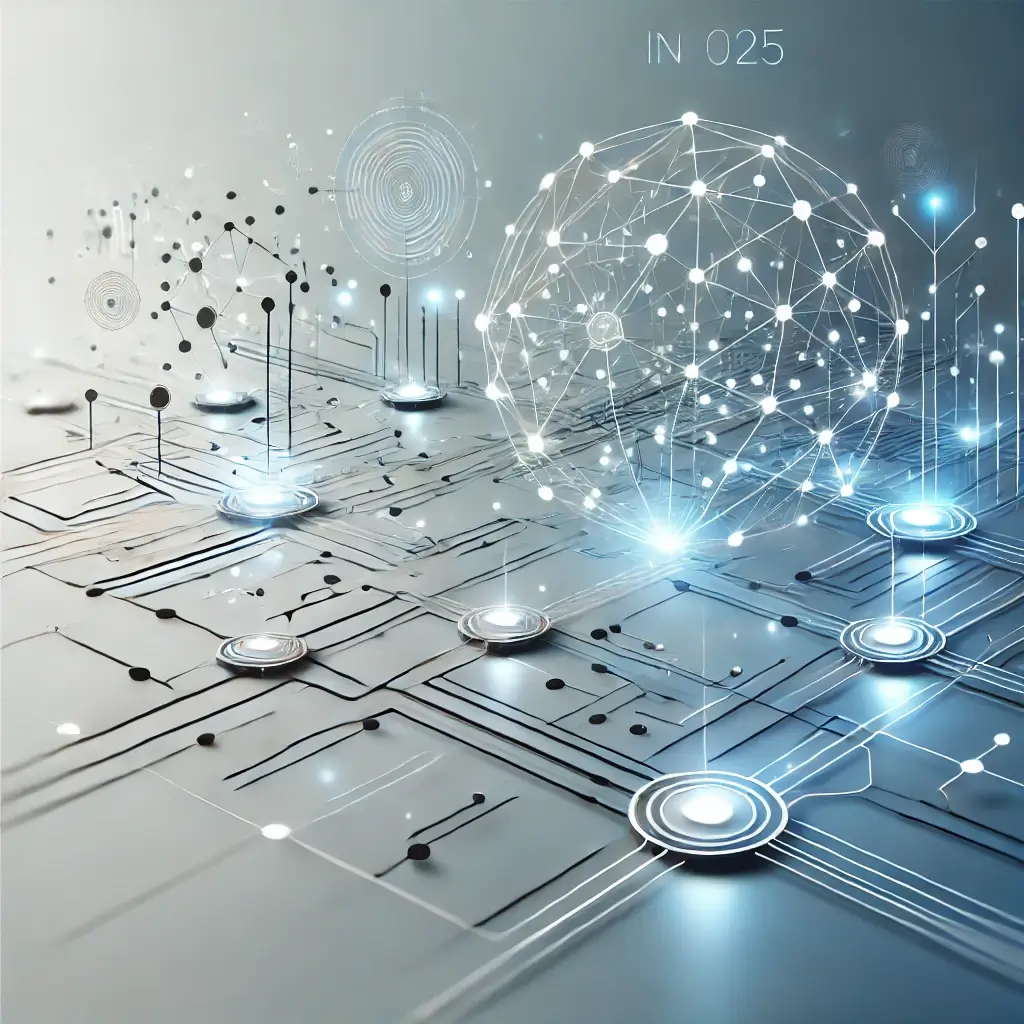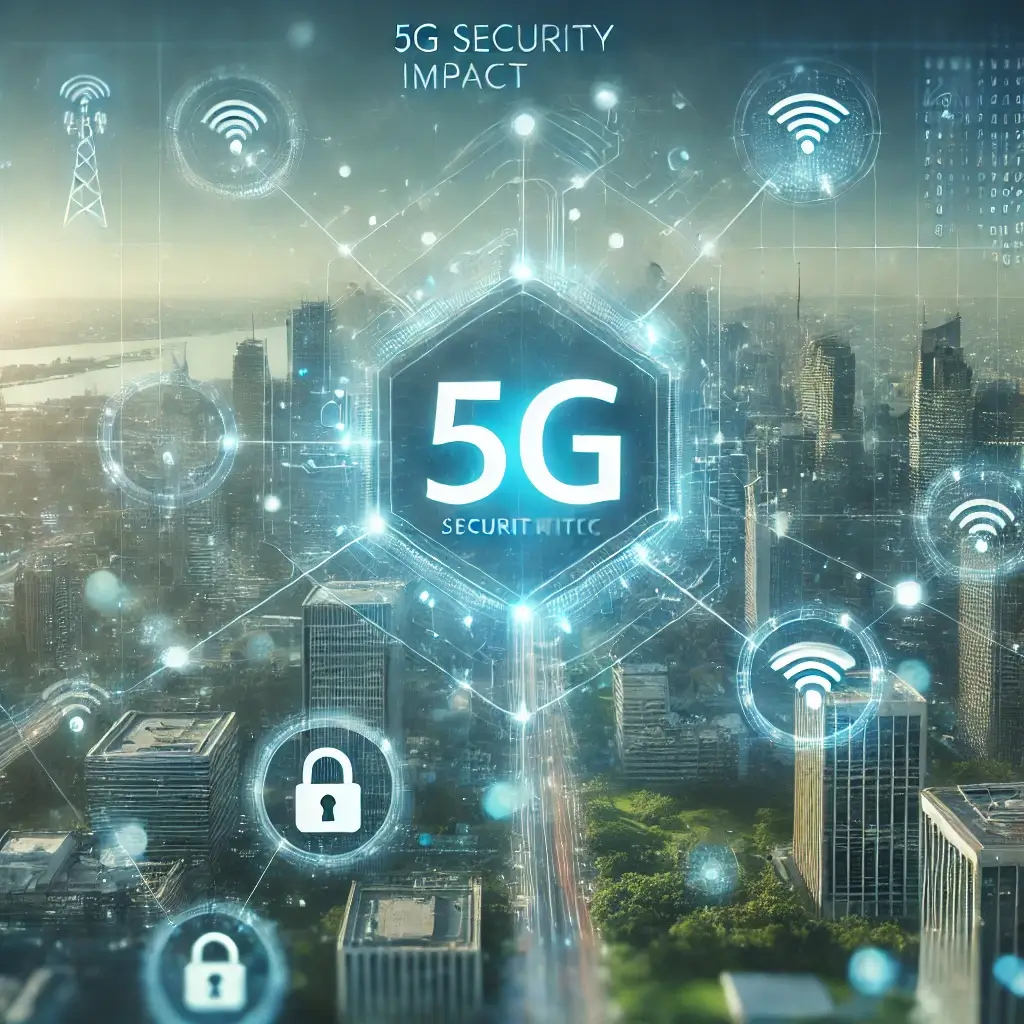In an era where digital technology is at the heart of our personal and professional lives, the significance of networking and data security has never been more paramount. The rapid evolution of digital networks has transformed how we communicate, work, and manage data, making these systems the backbone of modern society. However, as our reliance on these networks intensifies, so does the complexity and sophistication of the security threats they face.
The future of networking and data security is not just about combating these threats but also about embracing the innovative technologies and practices that are emerging in response. This blog post delves into the latest advancements that are reshaping the landscape of networking and data security. From the deployment of cutting-edge network infrastructure like 5G and IoT to revolutionary data protection methods, we are on the cusp of a new era. We will explore how these developments not only address current challenges but also pave the way for a more secure and interconnected future. Join us as we uncover the trends and best practices that are setting the course for the future of networking and data security.
1. Evolving Landscape of Networking Technologies
The world of networking is in a constant state of evolution, adapting to meet the ever-growing demands of our digital society. This section examines where we currently stand in networking technologies and looks ahead to what the future might hold.
1.1 Current State of Networking Technologies
Today’s networking landscape is dominated by technologies that have been the backbone of our digital communication for years. Technologies like 4G LTE, Wi-Fi, and traditional wired networks (Ethernet) have enabled significant advancements in connectivity and communication. However, they are not without their limitations.
For instance, 4G LTE networks, while widespread, often struggle with bandwidth limitations and latency issues, particularly in densely populated areas. Similarly, traditional Wi-Fi networks, despite their ubiquity, face challenges in terms of signal interference, security vulnerabilities, and coverage inconsistencies.
The existing infrastructure also grapples with accommodating the explosive growth in data traffic, driven by the proliferation of mobile devices, streaming services, and the increasing interconnectivity of devices (IoT). These challenges highlight a pressing need for more advanced, efficient, and secure networking technologies that can keep pace with the growing demands of modern users and applications.
1.2. Emerging Networking Technologies
In response to these challenges, several emerging technologies are poised to redefine the networking landscape. Key among these are:
- 5G Networks: 5G promises significantly faster speeds, lower latency, and higher capacity compared to 4G LTE. It’s set to revolutionize everything from mobile broadband to the Internet of Things (IoT), enabling new applications such as autonomous vehicles, smart cities, and advanced telemedicine.
- Internet of Things (IoT): IoT technology is leading to an unprecedented level of interconnected devices. From smart home devices to industrial sensors, IoT demands networking technologies that can handle massive amounts of data, provide reliable connectivity, and ensure robust security.
- Artificial Intelligence in Networking: AI is playing an increasingly crucial role in managing and optimizing network operations. Through predictive analytics, AI can anticipate network problems before they occur, optimize traffic routing, and enhance security protocols.
- Software-Defined Networking (SDN) and Network Function Virtualization (NFV): These technologies offer more flexible and efficient network management by decoupling the network hardware from its control mechanism. This enables quicker adaptation to changing network requirements and conditions.
These technologies are not just incremental improvements but are pivotal in shaping the future of networking. They promise to address current limitations while opening doors to new capabilities and applications, ultimately transforming how we interact with and through technology.
2. Data Security Challenges and Innovations
In this digital era, data is a valuable asset, but its security is constantly under threat. This section explores the contemporary challenges in data security and the innovative solutions that are emerging to counter these threats.
2.1. Present Data Security Challenges
Data security today is besieged by an array of sophisticated threats that evolve at an alarming pace. Key challenges include:
- Cyber Threats: Cyber-attacks have become more advanced, with tactics like ransomware, phishing, and social engineering attacks becoming more prevalent. These attacks not only target large organizations but also small businesses and individuals.
- Data Breaches: High-profile data breaches are increasingly common, leading to significant financial and reputational damage. These breaches often involve sensitive personal and financial information, with long-term consequences for those affected.
- Compliance and Regulatory Challenges: With the advent of regulations like GDPR and CCPA, organizations are under greater pressure to ensure data privacy and security. Non-compliance can result in hefty fines and legal repercussions.
- Insider Threats: Security breaches are not always external; sometimes, they originate from within an organization. Insider threats, whether malicious or accidental, are a significant concern for data security.
- Emerging Technologies Risks: As organizations adopt new technologies like IoT and cloud computing, they encounter unique security vulnerabilities. Ensuring the security of these technologies is a complex and ongoing challenge.
2.2. Innovative Solutions in Data Security
In response to these challenges, several innovative solutions are being developed:
- Advanced Encryption Techniques: To protect data, both in transit and at rest, new encryption methods are being employed. Techniques like quantum encryption offer promising avenues for virtually unbreakable data security.
- Blockchain for Security: Blockchain technology is being leveraged for its robust security features. It offers a decentralized way of storing data, making it tamper-resistant and transparent, which is beneficial for preventing fraud and enhancing data integrity.
- AI and Machine Learning in Security: AI and machine learning algorithms are increasingly used to detect and respond to threats in real-time. They can analyze patterns, predict potential breaches, and automate responses to security incidents.
- Zero Trust Security Models: Moving away from the traditional ‘trust but verify’ model, zero trust frameworks ensure strict identity verification for every person and device trying to access resources on a network, regardless of whether they are within or outside of the network perimeter.
- Enhanced Privacy Tools: Tools that enhance user privacy, like privacy-preserving computation and secure multi-party computation, are gaining traction. They allow data to be used and shared without compromising individual privacy.
These innovations are not just reactive measures but proactive steps towards building a more secure digital future. They reflect a comprehensive approach to data security, encompassing technology, processes, and people.
3. Best Practices for Networking and Data Security
In a world where technology is rapidly evolving, adopting best practices in networking and data security is essential. This section offers practical tips and strategies to ensure efficient and secure networking, along with guidelines to maintain robust data security.
3.1. Best Practices in Networking
Effective networking is not just about using the latest technology; it’s also about how you use it. Here are some best practices:
- Regular Network Assessments: Conducting regular audits and assessments of your network can help identify vulnerabilities and performance issues.
- Segmentation and Isolation: Segment your network to isolate critical systems and data. This limits the spread of potential breaches and reduces the risk of network-wide infections.
- Use of VPNs: Implement Virtual Private Networks (VPNs) for secure remote access. VPNs encrypt data transmission, protecting sensitive information from interception. Try NordVPN for a reliable and efficient solution. It offers robust encryption, a wide range of servers, and advanced security features like double VPN and a no-logs policy, ensuring that your online activities remain private and secure!**
- Update and Patch Management: Keep your network devices updated with the latest software patches and security updates to protect against known vulnerabilities.
- Implement Strong Authentication Protocols: Use multi-factor authentication (MFA) for accessing network resources to add an additional layer of security.
- Educate and Train Employees: Regular training and awareness programs for employees can mitigate risks associated with human error.
** : NordVPN is particularly suitable for businesses and individuals who require a high level of data protection, especially when accessing the internet over public Wi-Fi networks or working remotely. Moreover, NordVPN’s user-friendly interface and compatibility with multiple devices make it a convenient option for securing your digital communications.
3.2. Best Practices in Data Security
Maintaining robust data security requires a multi-faceted approach:
- Data Encryption: Encrypt sensitive data both in transit and at rest. This ensures that even if data is intercepted or accessed unauthorizedly, it remains unreadable.
- Regular Backups: Implement a robust data backup strategy. Regular backups can be a lifesaver in the event of data loss due to cyber-attacks or other disasters.
- Access Control: Limit access to sensitive data based on user roles and responsibilities. Employ the principle of least privilege to minimize exposure of data.
- Incident Response Plan: Have a well-defined incident response plan in place. This plan should outline the steps to take in the event of a data breach or security incident.
- Stay Informed About New Threats: Keeping abreast of the latest cybersecurity threats can help you prepare and protect against them.
- Compliance and Regulatory Adherence: Ensure that your data security practices are in line with relevant laws and regulations to avoid legal penalties and reputational damage.
By implementing these best practices, organizations can significantly reduce their vulnerability to network and data security threats, ensuring a more secure and resilient digital environment.
4. The Integration of Networking and Data Security
In the modern digital landscape, the boundaries between networking and data security are increasingly blurring. This section explores the growing interdependence of these fields and highlights some of the integrated solutions and trends shaping the future.
4.1. Networking and Data Security: An Interdependent Relationship
As the digital world grows more interconnected, the lines between networking and data security have become intertwined. Networking is no longer just about connectivity; it’s equally about securing that connectivity. Conversely, data security relies heavily on the underlying network architecture to implement and enforce security protocols. This symbiosis is driving innovations that are reshaping both fields.
4.2. Integrated Solutions in Networking and Data Security
- Secure SD-WAN (Software-Defined Wide Area Network): SD-WAN technology integrates networking and security by allowing organizations to control and secure network traffic across multiple locations. It offers a centralized control function to securely and intelligently direct traffic across the WAN, enhancing efficiency and reducing costs.
- Network Access Control (NAC): NAC systems help in identifying every device connected to a network and enforcing security policies for each access point. By integrating NAC into the network infrastructure, organizations can better prevent unauthorized access, enforce security compliance, and mitigate risks.
- AI-Driven Security Operations: The integration of AI in networking and security operations enables predictive threat detection and response. This synergy allows for real-time monitoring of network traffic to identify anomalies and potential security threats, enhancing overall network resilience.
- Cloud-based Security Services: The shift to cloud networking has led to the emergence of cloud-based security services. These services, like Security as a Service (SECaaS), provide scalable security solutions that are integrated with the network infrastructure, offering improved threat intelligence and data protection.
4.3. Future Trends: Converging Paths of Networking and Security
- 5G and Security: The rollout of 5G networks is set to introduce new security challenges and opportunities. The increased speed and capacity of 5G networks will necessitate advanced security protocols to protect against new vulnerabilities.
- Edge Computing and Security: As edge computing pushes data processing to the edge of the network, securing these decentralized nodes becomes crucial. The integration of security into edge devices will be vital for protecting the data they process and store.
- Quantum Networking and Cryptography: Quantum networking, still in its infancy, promises to revolutionize data security. Quantum cryptography, for instance, could provide unhackable communication channels, fundamentally changing how data security is implemented in networks.
5. Preparing for the Future
As the landscapes of networking and data security evolve, staying ahead requires not only adapting to current trends but also preparing for future developments. This section focuses on the skills and knowledge essential for professionals and anticipates future trends in these dynamic fields.
5.1. Skills and Knowledge for the Future
Professionals aiming to thrive in the fields of networking and data security should focus on developing a blend of technical and soft skills:
- Technical Skills:
- Cybersecurity Expertise: Understanding of contemporary cybersecurity practices, ethical hacking, and threat mitigation strategies.
- Network Management: Skills in managing and optimizing various types of networks, including traditional, cloud-based, and SDN networks.
- Programming Languages: Proficiency in languages like Python, Java, or C++, especially for developing security software or automating network tasks.
- Data Analytics: Ability to analyze large sets of data for security insights or network performance improvements.
- Soft Skills:
- Problem-Solving: The ability to think critically and solve complex networking and security challenges.
- Adaptability: Keeping up with rapid technological changes and adapting strategies accordingly.
- Communication: Effective communication skills for translating technical details into understandable terms for non-technical stakeholders.
Continual learning and certification in relevant areas (like CISSP, CEH, or CCNP) can also be beneficial.
5.2. Future Trends and Predictions
Looking ahead, several trends are likely to shape the future of networking and data security:
- Increased Integration of AI and ML: AI and machine learning will become more deeply integrated into networking and security systems, leading to more automated and intelligent responses to security threats and network management.
- Expansion of IoT and Its Security Implications: As IoT devices proliferate, securing these devices and the data they generate will become increasingly critical.
- Rise of Quantum Computing: The advent of quantum computing could bring both opportunities and challenges in networking and data security, particularly in the field of cryptography.
- Emphasis on Privacy-Enhancing Technologies: In response to growing data privacy concerns, technologies that enhance user privacy without compromising functionality will gain prominence.
- 5G and Beyond: The continued rollout of 5G will lead to new networking capabilities and security considerations, paving the way for even more advanced wireless technologies.
- Edge Computing: The growth of edge computing will drive the need for distributed security models, as data processing and storage move closer to the user.
Conclusion
As we’ve explored in this post, the landscape of networking and data security is rapidly evolving, shaped by both challenges and innovations. We began by examining the current state of networking technologies, acknowledging their limitations, and then delved into the exciting realm of emerging technologies such as 5G, IoT, and AI-driven networking. These advancements promise to transform our connectivity and open up new possibilities for interaction and data exchange.
In the realm of data security, we confronted the pressing challenges of today’s digital environment, from sophisticated cyber threats to the complexities of regulatory compliance. The innovative solutions we discussed, including advanced encryption techniques, blockchain applications, AI in security, and zero-trust models, are not just responses to these challenges but proactive steps towards a more secure digital world.
The integration of networking and data security underscores a crucial trend: these once-separate domains are now inextricably linked, with each driving innovation in the other. Secure SD-WAN, Network Access Control, and cloud-based security services exemplify this synergy, offering integrated solutions for a more secure and efficient digital infrastructure.
As we look to the future, it’s clear that the path of technological advancement is one of convergence and collaboration. The integration of networking and data security is not just a trend but a necessity, ensuring that our digital infrastructure is robust, resilient, and capable of supporting the next generation of technological innovations.
We encourage you, our readers, to stay informed and engaged with these developments. Embrace the new technologies and practices that are shaping the future of networking and data security. By doing so, you’ll not only protect your data but also contribute to a more secure and interconnected world.







